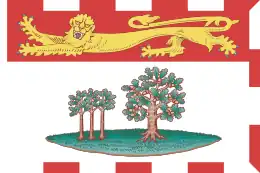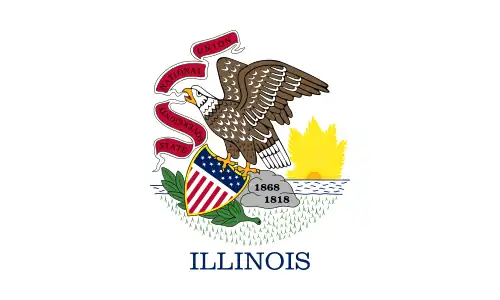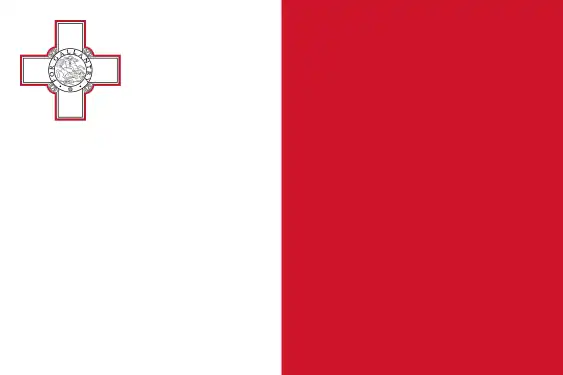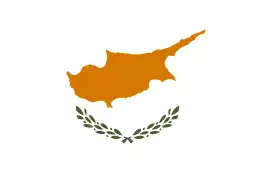
Compulsory education refers to a period of education that is required of all people and is imposed by the government. This education may take place at a registered school or at other places.
Compulsory school attendance or compulsory schooling means that parents are obliged to send their children to a state-approved school.[1]
All countries except Bhutan, Papua New Guinea, Solomon Islands, and Vatican City have compulsory education laws.
Purpose
During the late 18th and early 19th centuries, most schools in the United States did not mandate regular attendance. In many areas, students attended school for no more than three to four months out of the year.[2]
At the start of the 20th century, the purpose of compulsory education was to master physical skills which are necessary and can be contributed to the nation. It also instilled values of ethics and social communications abilities in teenagers, and it would allow immigrants to fit in the unacquainted society of a new country.[3] It is mostly used to advance the education of all citizens, minimize the number of students who stop going to school because of family economic reasons, and balance the education differences between rural and urban areas.
The overall correlation between the level of access to education in a country and the skills of its student population is weak. This disconnect between education access and education quality may be the consequence of weak capacity to implement education policies or lack of information on the part of policymakers on how to promote student learning. In other situations, governments might be intentionally motivated to provide education for reasons that have nothing to do with improving the knowledge and skills of citizens.[4] On the other hand, in countries with a republican system of government, being educated is necessary and important for every citizen.[5]
Throughout history, compulsory education laws have typically been the latest form of education intervention enacted by states. In general, governments in Europe and Latin America began to intervene in primary education an average of 107 years before democratization as measured by Polity. Compulsory education laws, despite being one of the last measures introduced by central governments seeking to regulate primary education, nevertheless were implemented an average of 52 years before democratization as measured by Polity and 36 years before universal male suffrage.[4]
Historically, there is a trend of mass education being introduced in the aftermath of civil wars.[6] According to a 2022 study, nondemocracies frequently introduced mass education to teach obedience and respect for authority.[6]
History
Antiquity to medieval times
Compulsory education was not unheard of in ancient times. However, instances are generally tied to royal, religious or military organizations—substantially different from modern notions of compulsory education.
Plato's The Republic (c. 424 – c. 348 BCE) is credited with having popularized the concept of compulsory education in Western intellectual thought. Plato's rationale was straightforward. The ideal city would require ideal individuals, and ideal individuals would require an ideal education. The popularization of Plato's ideas began with the wider Renaissance and the translation of Plato's works by Marsilio Ficino (1434–1499), culminating in the Enlightenment. The Enlightenment philosopher Jean-Jacques Rousseau, known for his own work on education (including Emile, or On Education), said, 'To get a good idea of public education, read Plato's Republic. It is not a political treatise, as those who merely judge books by their title think, but it is the finest, most beautiful work on education ever written.'[7]
In Sparta boys between the age 6 and 7 left their homes and were sent to military school. School courses were harsh and have been described as a "brutal training period". Between the age of 18 and 20, Spartan males had to pass a test that consisted of fitness, military ability, and leadership skills. A student's failure meant a forfeiture of citizenship (perioidos) and political rights. Passing was a rite of passage to manhood and citizenry, in which he would continue to serve in the military and train as a soldier until the age of 60 when the soldier could retire to live with his family.[8]
Every parent in Judea since ancient times was required to teach their children at least informally. Over the centuries, as cities, towns and villages developed, a class of teachers called Rabbis evolved. According to the Talmud (tractate Bava Bathra 21a), which praises the sage Joshua ben Gamla with the institution of formal Jewish education in the 1st century AD, Ben Gamla instituted schools in every town and made formal education compulsory from age 6 to 8.[9]
The Aztec Triple Alliance, which ruled from 1428 to 1521 in what is now central Mexico, is considered to be the first state to implement a system of universal compulsory education, although earlier Nahua states may have had it as well.[10][11]
Early Modern Era
The Protestant Reformation prompted the establishment of compulsory education for boys and girls, first in regions that are now part of Germany, and later in Europe and in the United States.
Martin Luther's seminal text An die Ratsherren aller Städte deutschen Landes (To the Councillors of all Towns in German Countries, 1524) called for establishing compulsory schooling so that all parishioners would be able to read the Bible by themselves.[12] The Protestant South-West of the Holy Roman Empire soon followed suit. In 1559, the German Duchy Württemberg established a compulsory education system for boys.[13] In 1592, the German Duchy Palatine Zweibrücken became the first territory in the world with compulsory education for girls and boys,[14] followed in 1598 by Strasbourg, then a free city of the Holy Roman Empire and now part of France.
In Scotland, the School Establishment Act 1616 commanded every parish to establish a school for everyone paid for by parishioners. The Parliament of Scotland confirmed this with the Education Act 1633 and created a local land-based tax to provide the required funding. The required majority support of parishioners, however, provided a tax evasion loophole which heralded the Education Act 1646. The turmoil of the age meant that in 1661 there was a temporary reversion to the less compulsory 1633 position. However, a new Education Act 1696 re-established the compulsory provision of a school in every parish with a system of fines, sequestration, and direct government implementation as a means of enforcement where required, making Scotland the first country with national compulsory education.
In the United States, following Luther and other Reformers, the Separatist Congregationalists who founded Plymouth Colony in 1620, obliged parents to teach their children how to read and write.[15] The Massachusetts School Laws, three legislative acts enacted in the Massachusetts Bay Colony in 1642, 1647, and 1648, are commonly regarded as the first steps toward compulsory education in the United States. The 1647 law, in particular, required every town having more than 50 families to hire a teacher, and every town of more than 100 families to establish a school.[16] The Puritan zeal for learning was reflected in the early and rapid rise of educational institutions; e.g., Harvard College was founded as early as 1636.[17]
Prussia implemented a modern compulsory education system in 1763.[18] It was introduced by the Generallandschulreglement (General School Regulation), a decree of Frederick the Great in 1763–5.[19] The Generallandschulreglement, authored by Johann Julius Hecker, asked for all young citizens, girls and boys, to be educated from age 5 to age 13–14 and to be provided with a basic outlook on (Christian) religion, singing, reading and writing based on a regulated, state-provided curriculum of text books. The teachers, often former soldiers, were asked to cultivate silk worms to make a living besides contributions from the local citizens and municipalities.[20][21]
In Austria, Hungary and the Lands of the Bohemian Crown (Czech lands), mandatory primary education was introduced by Empress Maria Theresa in 1774.[19]
Late Modern Era
Compulsory school attendance based on the Prussian model gradually spread to other countries. It was quickly adopted by the governments in Denmark-Norway and Sweden, and also in Finland, Estonia and Latvia within the Russian Empire, and later England and Wales and France.[22]
Due to population growth and the proliferation of compulsory education, UNESCO calculated in 2006 that over the subsequent 30 years, more people would receive formal education than in all prior human history.[23]
France
France was slow to introduce compulsory education, this time due to conflicts between the secular state and the Catholic Church,[20] and as a result between anti-clerical and Catholic political parties. During the July Monarchy, government officials proposed a variety of public primary education provisions, culminating in the Guizot Law of 28 June 1833. The Guizot law mandated that all communes provide education for boys and required that schools implement a curriculum focused on religious and moral instruction. The first set of Jules Ferry Laws, passed in 1881, extended the central government's role in education well beyond the provisions of the Guizot Law, and made primary education free for girls and boys. In 1882, the second set of Jules Ferry Laws made education compulsory for girls and boys until the age of 13.[24] In 1936, the upper age limit was raised to 14. In 1959, it was further extended to 16.[25]
United States
In 1852, Massachusetts was the first U.S. state to pass a compulsory universal public education law. In particular, the Massachusetts General Court required every town to create and operate a grammar school. Fines were imposed on parents who did not send their children to school, and the government took the power to take children away from their parents and apprentice them to others if government officials decided that the parents were "unfit to have the children educated properly."[26] In 1918, Mississippi became the last state to enact a compulsory attendance law.[27]
In 1922 an attempt was made by the voters of Oregon to enact the Oregon Compulsory Education Act, which would require all children between the ages of 8 and 16 to attend public schools, only leaving exceptions for mentally or physically unfit children, exceeding a certain living distance from a state school, or having written consent from a county superintendent to receive private instruction.[28] The law was passed by popular vote but was later ruled unconstitutional by the United States Supreme Court in Pierce v. Society of Sisters, determining that "a child is not a mere creature of the state." This case settled the dispute about whether or not private schools had the right to do business and educate within the United States.
Russia/USSR
In the Soviet Union, a compulsory education provision law was implemented in 1930.[29] State-provided education during this era was primarily focused on eradicating illiteracy. In line with the overall goals of the regime's Five Year Plans, the motivation behind education provision and literacy instruction was to ”train a new generation of technically skilled and scientifically literate citizens.”[30] Industrial development needed more skilled workers of all kinds. No possible source of talent could be left untapped, and the only way of meeting these needs was by the rapid development of a planned system of mass education.”[31] Soviet schools “responded to the economic requirements of society” by emphasizing “basic formation in math, and polytechnic knowledge related to economic production.”[32] The Soviet regime's deliberate expansion of mass education supremacy was what most impressed the U.S. education missions to the USSR in the 1950s.[4]
China
China's nine-year compulsory education was formally established in 1986 as part of its economic modernization program.[33] It was designed to promote "universalization", the closure of the education gap by economic development and between rural and urban areas by provision of safe and high-quality schools.[34] The program initially faced shortages due to a huge population and weak economic foundation, but by 1999 primary and junior middle schools respectively served 90% and 85% of the national population.[33]
Timeline of introduction
1700s
1800s
- 1805:
 Liechtenstein[37]
Liechtenstein[37] - 1814:
 Denmark[36]
Denmark[36] - 1817:
 Travancore[38]
Travancore[38] - 1824:
.svg.png.webp) Ottoman Empire[39]
Ottoman Empire[39] - 1834:
 Greece[36]
Greece[36] - 1841:
 Hawaii[40]
Hawaii[40] - 1842:
 Sweden[36]
Sweden[36] - 1844:
 Portugal[36]
Portugal[36] - 1852:
 Massachusetts[40]
Massachusetts[40] - 1857:
 Spain[41]
Spain[41] - 1864:
 Washington, D.C.,[40]
Washington, D.C.,[40]  Romania
Romania - 1867:
 Vermont[40]
Vermont[40] - 1868:
 Montenegro
Montenegro - 1869:
 Slovenia,
Slovenia,  Italy,[42]
Italy,[42]  Costa Rica[43]
Costa Rica[43] - 1870:
 Colombia[44]
Colombia[44] - 1871:
 Michigan,
Michigan,  New Hampshire,
New Hampshire,  Washington,[40]
Washington,[40]  Ontario,[45]
Ontario,[45]  Western Australia[46]
Western Australia[46] - 1872:
 Japan,
Japan,  Scotland,[47]
Scotland,[47]  Connecticut (de facto unenforceable),[40]
Connecticut (de facto unenforceable),[40] .svg.png.webp) Victoria[46]
Victoria[46] - 1873:
 Nevada,[40]
Nevada,[40]  British Columbia[45]
British Columbia[45] - 1874:
.svg.png.webp) Switzerland,[36]
Switzerland,[36]  Kansas,
Kansas,  New York,
New York,  California[40]
California[40] - 1875:
 New Jersey,
New Jersey,  Maine,[40]
Maine,[40]  South Australia[46]
South Australia[46] - 1876:
 Wyoming,[40]
Wyoming,[40]  Guyana,
Guyana,  Suriname[48]
Suriname[48] - 1877:
 New Zealand,
New Zealand,  Uruguay,[44]
Uruguay,[44]  Ohio,[40]
Ohio,[40]  Prince Edward Island[45]
Prince Edward Island[45] - 1878:
 Bulgaria
Bulgaria - 1879:
 Wisconsin[49]
Wisconsin[49] - 1880:
 England,[36]
England,[36]  Wales,[36]
Wales,[36]  New South Wales,[46]
New South Wales,[46]  Venezuela[50]
Venezuela[50] - 1882:
 France,[36]
France,[36]  Serbia[51]
Serbia[51] - 1883:
 Montana,
Montana,  Illinois,
Illinois,  North Dakota,
North Dakota,  South Dakota,
South Dakota,  Rhode Island,[40]
Rhode Island,[40]  Nova Scotia[45]
Nova Scotia[45] - 1884:
 Argentina[44]
Argentina[44] - 1885:
 Minnesota[40]
Minnesota[40] - 1886:
 Colombia (abolished)[44]
Colombia (abolished)[44] - 1887:
 Idaho,
Idaho,  Nebraska[40]
Nebraska[40] - 1889:
 Norway,[52]
Norway,[52]  Oregon,
Oregon,  Colorado[40]
Colorado[40] - 1890:
 Barbados,[53]
Barbados,[53]  Utah[40]
Utah[40] - 1891:
 New Mexico[40]
New Mexico[40] - 1892:
 Ireland[36]
Ireland[36] - 1895:
 Pennsylvania[40]
Pennsylvania[40] - 1896:
 Kentucky,
Kentucky,  Hawaii[40]
Hawaii[40] - 1897:
 Ecuador,[44]
Ecuador,[44]  Indiana,
Indiana,  West Virginia[40]
West Virginia[40] - 1899:
 Arizona,[40]
Arizona,[40]  Puerto Rico
Puerto Rico
1900s
- 1900:
 Netherlands,[36]
Netherlands,[36]  Queensland[46]
Queensland[46] - 1902:
 Iowa,
Iowa,  Maryland[40]
Maryland[40] - 1904:
 Guam[54]
Guam[54] - 1905:
 Peru,
Peru,  Tennessee,
Tennessee,  Missouri,[40]
Missouri,[40]  New Brunswick[45]
New Brunswick[45] - 1906:
 Namibia (only for white children with less than 4 km to the nearest school)[55]
Namibia (only for white children with less than 4 km to the nearest school)[55] - 1907:
 Iceland,[56]
Iceland,[56]  Delaware,
Delaware,  North Carolina,
North Carolina,  Oklahoma[40]
Oklahoma[40] - 1908:
 Virginia[40]
Virginia[40] - 1909:
 Paraguay,[44]
Paraguay,[44]  Arkansas,[40]
Arkansas,[40]  Saskatchewan[45]
Saskatchewan[45] - 1910:
 Louisiana,[40]
Louisiana,[40]  Alberta[45]
Alberta[45] - 1912:
 Luxembourg[36]
Luxembourg[36] - 1913:
 Albania[57]
Albania[57] - 1915:
 Alabama,
Alabama,  South Carolina,
South Carolina,  Florida,
Florida,  Texas[40]
Texas[40] - 1916:
 Georgia (U.S. state),[40]
Georgia (U.S. state),[40]  Manitoba,[45]
Manitoba,[45]  Tasmania[46]
Tasmania[46] - 1917:
 Mexico,[58]
Mexico,[58]  Gibraltar[59]
Gibraltar[59] - 1918:
 Mississippi[40]
Mississippi[40] - 1919:
.svg.png.webp) Belgium,[36]
Belgium,[36]  Poland (only for children with less than 3 km to the nearest school),[60]
Poland (only for children with less than 3 km to the nearest school),[60]  Latvia, all of
Latvia, all of  Germany (Weimar Constitution)[61]
Germany (Weimar Constitution)[61] - 1920:
 Chile,[44]
Chile,[44]  Estonia,[62]
Estonia,[62]  Eswatini (white children only)
Eswatini (white children only) - 1921:
 Finland,[63]
Finland,[63]  Thailand[64]
Thailand[64] - 1923:
 Nauru[65]
Nauru[65] - 1924:
.svg.png.webp) Ukrainian SSR[66]
Ukrainian SSR[66] - 1925:
 Mongolia[67]
Mongolia[67] - 1926:
.svg.png.webp) Byelorussian SSR[66]
Byelorussian SSR[66] - 1927:
 Colombia (reintroduced)[44]
Colombia (reintroduced)[44] - 1929:
 Alaska[40]
Alaska[40] - 1930:
 India,
India,  Soviet Union[66]
Soviet Union[66] - 1935:
.svg.png.webp) Afghanistan[68]
Afghanistan[68] - 1942:
 Newfoundland[45]
Newfoundland[45] - 1943:
 Quebec,[45]
Quebec,[45]  Iran[69]
Iran[69] - 1946:
 Malta[70]
Malta[70] - 1949:
 Israel[42]
Israel[42] - 1951:
 Libya[71]
Libya[71] - 1952:
 Jordan[72]
Jordan[72] - 1953:
 Egypt,[73]
Egypt,[73]  South Korea[74]
South Korea[74] - 1956:
 Poland (all children)[60]
Poland (all children)[60] - 1960:
 Chad
Chad - 1961:
 Ghana[75]
Ghana[75] - 1962:
 Cyprus,[76]
Cyprus,[76]  Mali
Mali - 1963:
 Algeria,[77]
Algeria,[77]  Morocco[78]
Morocco[78] - 1964:
 Mozambique (children with less than three miles to the nearest school)
Mozambique (children with less than three miles to the nearest school) - 1965:
 Kuwait[79]
Kuwait[79] - 1968:
 Republic of China[80][81][82]
Republic of China[80][81][82] - 1971:
 United Arab Emirates[83]
United Arab Emirates[83] - 1973:
 Indonesia
Indonesia - 1975:
 Somalia[84]
Somalia[84] - 1976:
 Iraq
Iraq - 1981:
 Seychelles,[85]
Seychelles,[85]  Syria[86]
Syria[86] - 1986:
 People's Republic of China[87]
People's Republic of China[87] - 1988:
 Brazil,[88]
Brazil,[88]  Philippines[89]
Philippines[89] - 1990:
 Bangladesh,[90]
Bangladesh,[90]  Yemen,
Yemen,  Namibia (all children)
Namibia (all children) - 1991:
 Tunisia[91]
Tunisia[91] - 1994:
 Samoa
Samoa - 1996:
 Laos,[92]
Laos,[92] .svg.png.webp) Afghanistan (abolished for women)[68]
Afghanistan (abolished for women)[68] - 1998:
 Lebanon,[93]
Lebanon,[93]  Sudan[94]
Sudan[94]
2000s
- 2000:
 Singapore[95]
Singapore[95] - 2001:
.svg.png.webp) Afghanistan (reintroduced for women),[68]
Afghanistan (reintroduced for women),[68]  Mauritania[96]
Mauritania[96] - 2003:
 Liberia,[97]
Liberia,[97]  Malaysia,[98]
Malaysia,[98]  Sierra Leone[99]
Sierra Leone[99] - 2005:
 Bahrain[100]
Bahrain[100] - 2007:
 Brunei[101]
Brunei[101] - 2008:
 Uganda,[102]
Uganda,[102]  Oman[103]
Oman[103] - 2009:
 Connecticut (enforceable misdemeanor, unenforceable prior to 2009)
Connecticut (enforceable misdemeanor, unenforceable prior to 2009) - 2010:
 Lesotho[104]
Lesotho[104] - 2021:
 Afghanistan (secondary school abolished for women)[105]
Afghanistan (secondary school abolished for women)[105]
Countries without compulsory education
 Bhutan[106]
Bhutan[106] Papua New Guinea[107]
Papua New Guinea[107] Solomon Islands[108]
Solomon Islands[108].svg.png.webp) Vatican City -- note: Since the Disappearance of Emanuela Orlandi, citizenship requirements have been tightened for non-religious lay residents of Vatican City, and a minimum age of 25 was imposed.
Vatican City -- note: Since the Disappearance of Emanuela Orlandi, citizenship requirements have been tightened for non-religious lay residents of Vatican City, and a minimum age of 25 was imposed.
By country
The following table indicates at what ages compulsory education starts and ends in different countries. The most common age for starting compulsory education is 6, but that varies between 3 and 8.[109][110]
| Country/Region | Lower age range | Upper age range | Notes |
|---|---|---|---|
| 4 | 18 | [111] | |
| 5 | 15/17 | Upper age limit varies among states. Waived if pursuing full-time employment or full-time education. | |
| 6 | 15 | Compulsory education requires nine years spent in school. After completing all mandatory schooldays, it is obligatory to attend a secondary school or do an apprenticeship until the age of 18.[112] | |
| 5 | 18 | In Belgium, only compulsory education applies. School is not compulsory. | |
| 6 | 15 | ||
| 4 | 16 | Since 2020, compulsory education includes three years of preschool education before children start primary school.[113][114] | |
| 4 | 17 | Last changed in 2009.[115] | |
| 5–7 | 16/18 | Children who turn five by 31 December are required to begin schooling in British Columbia, New Brunswick, Nova Scotia, and Yukon. In Alberta, Newfoundland and Labrador, the Northwest Territories, Ontario, Prince Edward Island, and Quebec, a child is required to attend school at the age of six. Manitoba and Saskatchewan are the only provinces where the minimum compulsory attendance age is seven. Attendance in school is compulsory until the student reaches the age of 16 in all provinces except Manitoba, Ontario, and New Brunswick, where attendance is compulsory until the student is 18 years old. | |
| 6 | 15 | ||
| 6 | 15 | ||
| 4 | 17 | ||
| 5 | 15 | Compulsory education starts with one mandatory year of pre-primary (preschool) education.[116] | |
| 5 | 15 | Compulsory education requires one year spent in pre-school and nine years spent in school. Beginning age is negotiable ± 1 year. | |
| 6 | 16 | ||
| 6 | 14 | ||
| 4[117] | 16[118] | Requirement is for a full-time education, but attendance at a school is not compulsory (section 7 of The Education Act 1996). | |
| 6/7 | 15/16 | 6 year olds can enter if they turn 7 by 1 October in the same year.[119] | |
| 7 | 18 | Beginning age is negotiable ± 1 year. The law changed at the end of 2020 from the age of 15 to now 18. | |
| 3 | 16 | Compulsory education only | |
| 6 | 16 | Varies slightly between states.[120][121] | |
| 5 | 15 | Compulsory education starts with one mandatory year of pre-primary (preschool) education. | |
| 6 | 11 | The Haitian Constitution mandates that education be free of charge. However, even public schools charge substantial fees. 80% of children go to private schools. | |
| 6 | 15 | Hong Kong laws state that education is mandatory for 12 years (primary and secondary) and free for 15 years (kindergarten, primary and secondary) except for private schools or subsidized schools. | |
| 3 | 16 | Since 2015, kindergarten is compulsory from age 3, although exceptions are made for developmental reasons.[122][123] | |
| 3 | 18 | The Right of Children to Free and Compulsory Education Act in August 2009 made education free and compulsory for children aged between 6 and 14. This was further updated by National Education Policy 2020 which made education free and compulsory for children aged between 3 and 18. | |
| 6 | 18 | ||
| 3 | 16 | Compulsory education takes place from kindergarten through to 10th grade. | |
| 6 | 12[124] | ||
| 6 | 16 | ||
| 5 | 16 | Parents could face charges of child neglect if they prevent their children from going to school without valid reasons. Not enforced. | |
| 6 | 15 | ||
| 5 | 16[109][125] | ||
| 4 | 16[109] | ||
| 6 | 12[126] | ||
| 6 | 15 | ||
| 6 | 18 | Schooling is required through upper secondary school (Preparatoria).[127] | |
| 6 | 15 | ||
| 5 | 18 | Students are allowed to leave early after obtaining their 'start qualification' (MBO level 2, HAVO or VWO degree). | |
| 6 | 16 | Children typically commence school at five years. There is no direct cost until the age of 19.[128] | |
| 6 | 15 | A total of ten years (of study, and not schooling, as suggested here), where Primary school is year 1–7 (without grades), and Lower Secondary school (with grades) is year 8–10.[129] | |
| 4–6 | 18 | This was modified from 6–16 due to the addition of compulsory kindergarten and senior high school. | |
| 6 | 18 | Compulsory education starts with one year of pre-school (kindergarten) education, after which children start primary education.[130] Polish law distinguishes between compulsory school (obowiązek szkolny) and compulsory education (obowiązek nauki). | |
| 6 | 18 | It is the law that children living in Portugal (if they're 6 years old or more) must go to school. Home schooling is available with registration at a school and quarterly examinations in the Portuguese curriculum only. | |
| 5–6 | 18–19 | Since 2020, the last year of kindergarten, as well as the last two years of high school were added to compulsory education, bringing compulsory education to a total of 14 years. (see Education in Romania) | |
| 6 | 17 | Student may leave after age 15 with the approval of parents and the local authority.[131] | |
| 5 | 16 | A person is of school age if he has attained the age of five years and has not attained the age of sixteen years.[132] | |
| 6 | 15 | ||
| 7 | 15[133] | Compulsory Education Act 2000. Children who are homeschooled may be exempted from the Act. From 2019, children with moderate-to-severe special education needs are no longer exempt from the Act (children with mild special education needs were already covered by the Act).[134] | |
| 6 | 16 | ||
| 6 | 15 | Typical ages for 9 years of compulsory education from grade 1 to grade 9. | |
| 6 | 16[135] | ||
| 4–6 | 15 | Varies by canton.[109] | |
| 5 | 18 | Education shall be compulsory and free for all children from the beginning of the primary stage until the end of the preparatory stage or the age of eighteen, whichever is earlier. | |
| 7 | 15 | Typical ages for 9 years (6–15) of compulsory education (starting from 1968) and optional extend(a.k.a volunteer basic education) to age 18 (non compulsory, starting from 2014). | |
| 4 | 15 | Only compulsory education applies. School is not compulsory in Thailand. | |
| 6 | 18 | From the 1st to the 12th grade, education is compulsory. Starting in the educational year of 2012–2013, an education reform took effect to bring the compulsory education up to the end of high school. The system is commonly referred to as 4+4+4. | |
| 5–8 | 16–19 | Ages vary between states. Beginning age varies from 5 to 8, ending age varies from 16 to 19.[136] In Wisconsin v. Yoder, the Supreme Court determined in 1972 that Amish children could not be placed under compulsory education laws past the 8th grade. | |
| 6 | 14 | ||
| 6 | 16 | Typical ages for 11 years of compulsory education. |
Criticism
While compulsory education is mostly seen as important and useful, compulsory schooling is seen by some as obsolete and counterproductive in today's world and has repeatedly been the subject of sharp criticism.[137] Critics of compulsory schooling argue that such education violates the freedom of children; is a method of political control;[138] is ineffective at teaching children how to deal with the "real world" outside of school;[139] and may have negative effects on children, leading to higher rates of apathy, bullying, stress, and depression.[140]
See also
References
- ↑ "Compulsory Education". New England Journal of Education. 1 (5): 52. 1875. JSTOR 44763565.
- ↑ Shammas, Carole (May 2023). "The Extent and Duration of Primary Schooling in Eighteenth-Century America". History of Education Quarterly. 63 (2): 1-23. doi:10.1017/heq.2023.12.
- ↑ Niece, Richard (1983). "Compulsory Education: Milestone or Millstone?". The High School Journal. 67 (1). p. 33. JSTOR 40365328.
- 1 2 3 Paglayan, Agustina S. (February 2021). "The Non-Democratic Roots of Mass Education: Evidence from 200 Years". American Political Science Review. 115 (1): 179–198. doi:10.1017/S0003055420000647. ISSN 0003-0554.
- ↑ Camp, David N (1871). "Compulsory Education". The Connecticut School Journal. 1 (5): 181–184. JSTOR 44649076.
- 1 2 Paglayan, Agustina S. (2022). "Education or Indoctrination? The Violent Origins of Public School Systems in an Era of State-Building". American Political Science Review. 116 (4): 1242–1257. doi:10.1017/S0003055422000247. ISSN 0003-0554. S2CID 247848976.
- ↑ "The Internet Classics Archive | the Republic by Plato".
- ↑ Wikipedia: Agoge
- ↑ Wikipedia: Jewish education#Primary schooling
- ↑ Jacques Soustelle (11 November 2002). Daily life of the Aztecs: on the eve of the Spanish Conquest. Courier Dover Publications. p. 173. ISBN 978-0-486-42485-9. Retrieved 27 November 2012.
- ↑ Wikipedia: Aztec#Education
- ↑ Luther deutsch, p. 70, at Google Books
- ↑ "Große Kirchenordnung", 1559, Oliver Geister, Die Ordnung der Schule. Zur Grundlegung einer Kritik am verwalteten Unterricht. Münster 2006, p. 145.
- ↑ Emil Sehling (ed.), Die evangelischen Kirchenordnungen des 16. Jahrhunderts. Vol 18: Rheinland-Pfalz I. Tübingen 2006, p. 406.
- ↑ John Demos (1970), A Little Commonwealth: Family Life in Plymouth Colony. Oxford University Press, New York, N.Y., pp. 104, 142–144
- ↑ See references in articles Massachusetts School Laws and Massachusetts#Education.
- ↑ Clifton E. Olmstead (1960), History of Religion in the United States. Englewood Cliffs, N.J, pp. 79–80
- ↑ Neufeld, John (October 1963). "Compulsory Education in Germany". ALA Bulletin. 57 (9): 805. JSTOR 25696774.
- 1 2 James van Horn Melton. "Absolutism and the Eighteenth-Century Origins of Compulsory Schooling in Prussia and Austria". p. xiv.
- ↑ 250 Jahre Volksschule in Preußen, Lesen, Schreiben und Beten (250 years of primary education in Prussia) 12 August 2013 Tagesspiegel Berlin, Barbara Kerbel, in German
- ↑ Funding and training of the teachers was slowly expanded and received funding till teachers gained full academic status in the 20th century.
- ↑ Soysal, Yasemin Nuhoglu; Strang, David (1989). "Construction of the First Mass Education Systems in Nineteenth-Century Europe". Sociology of Education. 62 (4): 277–288. doi:10.2307/2112831. JSTOR 2112831.
- ↑ Schools Kill Creativity. TED Talks, 2006, Monterey, CA, USA.
- ↑ Paglayan, Agustina, 2020, "Replication Data for: The Non-Democratic Roots of Mass Education: Evidence from 200 Years", https://doi.org/10.7910/DVN/X2VJJX, Harvard Dataverse, V1, UNF:6:dsocagzDlr4OuK5c/RkP8g== [fileUNF]
- ↑ Barnard, H.C.. Education and the French Revolution (Cambridge: Cambridge University Press,1969)
- ↑ Rothbard, Murray Rothbard (1975). "The Puritans 'Purify': Theocracy in Massachusetts". Conceived in Liberty. Arlington House Publishers. ISBN 9780870002625.
- ↑ Katz, Michael S. "A History of Compulsory Education Laws" (PDF). ERIC – Institute of Education Sciences. ERIC. Retrieved 19 December 2014.
- ↑ Jorgenson, Lloyd P. (1968). "The Oregon School Law of 1922: Passage and Sequel". The Catholic Historical Review. Catholic University of America Press. 54 (3): 455–466. JSTOR 25018244.
- ↑ "Всеобщее обучение". otrok.ru (in Russian)
- ↑ U.S. DOE 1960, xv, cited in Paglayan 2021
- ↑ Grant 1964, 22, cited in Paglayan 2021
- ↑ U.S. DOE 1960, 1–2, cited in Paglayan 2021
- 1 2 Su, Xiaohuan (2002), Education in China: reforms and innovations, 五洲传播出版社, ISBN 978-7-80113-993-1, archived from the original on 17 March 2017, retrieved 19 February 2016
- ↑ Ding, Yanqing (2012). "The Problems with Access to Compulsory Education in China and the Effects of the Policy of Direct Subsidies to Students". Chinese Education & Society. Chinese Education & Society vol.45, no.1. 45: 13–21. doi:10.2753/CED1061-1932450102. S2CID 142831787.
- ↑ Reeh, Niels. 2016. Secularization Revisited – Teaching of Religion and the State of Denmark 1721 to 2006. Edited by Lori Beamann, Lene Kühle and Anna Halahoff: Springer.
- 1 2 3 4 5 6 7 8 9 10 11 12 13 Grinin, Leonid E.; Ilyin, Ilya V.; Herrmann, Peter; Korotayev, Andrey V. (2016). Globalistics and globalization studies: Global Transformations and Global Future. ООО "Издательство "Учитель". p. 66. ISBN 978-5705750269.
- ↑ School system
- ↑ based on the text in the previous section
- ↑ Examination of Mahmut II's 1824 Edict of Talim-i Sıbyan (Education of Infants) on the Compulsion of the Primary Education in Terms of the Rights of the Child
- 1 2 3 4 5 6 7 8 9 10 11 12 13 14 15 16 17 18 19 20 21 22 23 24 25 26 27 28 29 30 31 State Compulsory School Attendance Laws
- ↑ Education in Spain: Close-up of Its History in the 20th Century
- 1 2 100 Years of Educational Reforms in Europe: a contextual database
- ↑ COSTA RICA'S EDUCATION SYSTEM
- 1 2 3 4 5 6 7 8 Aubry, Carla; Geiss, Michael; Magyar-Haas, Veronika; Oelkers, Jürgen (2014). Education and the State: International perspectives on a changing relationship. Routledge. pp. 47–8. ISBN 9781317678236.
- 1 2 3 4 5 6 7 8 9 10 Philip Oreopoulos: Canadian Compulsory School Laws and their Impact on Educational, 2005
- 1 2 3 4 5 6 Free, compulsory and secular Education Acts
- ↑ "Part 4: The 1872 Education (Scotland) Act". Moray House School of Education and Sport, University of Edinburgh. 13 July 2015. Retrieved 7 November 2022.
- ↑ The status of Dutch in post-colonial Suriname
- ↑ Education in Wisconsin
- ↑ Sanchez, George I. (1963), The Development of Education in Venezuela, Office of Education (DHEW), Washington, DC., p. v
- ↑ Serbia
- ↑ "Norway" (PDF). Archived from the original (PDF) on 2020-11-30. Retrieved 2019-05-01.
- ↑ Historical developments of education in Barbados
- ↑ George Leland Dyer: Order No. 80, 1904
- ↑ "Education in Namibia" (PDF). p. 45.
- ↑ "Iceland: Education". Archived from the original on 2021-02-11. Retrieved 2019-05-01.
- ↑ Development of Education during the Years 1944 – 1948 in Albania
- ↑ Constitution of Mexico
- ↑ Edward G. Archer: Gibraltar, Identity and Empire
- 1 2 Dz.Pr.P.P. 1919/14/147
- ↑ "documentArchiv.de - Verfassung des Deutschen Reichs ["Weimarer Reichsverfassung"] (11.08.1919)". www.documentarchiv.de. Retrieved 2020-11-02.
- ↑ "Educational Policies: Estonia (2014)". Archived from the original on 2019-08-05. Retrieved 2019-05-01.
- ↑ "Finland: Evolution of Educational Provision". Archived from the original on 2019-05-17. Retrieved 2019-05-01.
- ↑ "The Development of Primary Education in Thailand and Its Present Challenges" (PDF). Archived from the original (PDF) on 2021-02-11. Retrieved 2019-05-01.
- ↑ Rapatahana, Vaughan; Bunce, Pauline (2012). English Language as Hydra: Its Impacts on Non-English Language Cultures. Multilingual Matters. pp. 27–28. ISBN 978-1-84769-752-3.
- 1 2 3 "Всеобщее обучение". otrok.ru (in Russian). Retrieved 1 May 2019.
- ↑ Literacy country study: Mongolia
- 1 2 3 "History of educational system in Afghanistan". Help the Afghan Children. 12 May 2003. Retrieved 1 May 2019.
- ↑ Encyclopædia Iranica: General Survey of Modern Education
- ↑ "History of the University". University of Malta. Archived from the original on 30 June 2011. Retrieved 2 February 2011.
- ↑ Constitution of Libya (1951)
- ↑ Constitution of Jordan
- ↑ Education in Egypt's development: the need for a wider system of appraisal
- ↑ Historical Review of Korea's Education
- ↑ "Education Act, 1961". Archived from the original on 2020-02-15. Retrieved 2019-05-01.
- ↑ THE EDUCATIONAL SYSTEM IN CYPRUS
- ↑ Algeria
- ↑ Diyen, Hayat 2004,"reform of secondary education in Morocco: Challenges and Prospects." Prospects, vol XXXIV.no.2, pp212
- ↑ "Kuwait Education".
- ↑ Education in Taiwan
- ↑ "Republic of China Ministry of Education". Archived from the original on 2022-01-18. Retrieved 2021-07-28.
- ↑ "National Central Library Admonition of Nine Years: Compulsory Education". Archived from the original on 2022-01-18. Retrieved 2021-07-28.
- ↑ A History of Education in the United Arab Emirates and Trucial Sheikdoms
- ↑ Somalia – Education
- ↑ A country study: Seychelles
- ↑ Increasing The School Access in Azaz City, Syria: A GIS-Based Set Covering Model
- ↑ Compulsory Education Law of the People’s Republic of China, 1986
- ↑ http://www.planalto.gov.br/ccivil_03/constituicao/constituicao.htm
- ↑ Republic Act No. 6655, Chan Robles Law Library.
- ↑ Compulsory Primary Education Act, 1990
- ↑ Education in the Maghreb: Tunisia
- ↑ "World Data on Education: Laos" (PDF). Archived from the original (PDF) on 2021-02-11. Retrieved 2019-05-01.
- ↑ Children’s Rights: Lebanon
- ↑ "World Data on Education: Sudan" (PDF). Archived from the original (PDF) on 2020-12-02. Retrieved 2019-06-26.
- ↑ Compulsory education Act is passed, 2000
- ↑ Mauritania
- ↑ World Bank: Education in Liberia
- ↑ National Education System
- ↑ "Sierra Leone: Newsline". Archived from the original on 2020-12-02. Retrieved 2019-06-26.
- ↑ Law No. 27 of 2005 with respect to Education.
- ↑ Compulsory Education Act (Cap. 211)
- ↑ Education Act, 2008
- ↑ View of Education development in Oman
- ↑ The Obstacles Facing Students in Lesotho
- ↑ George, Susannah (23 March 2022). "Taliban reopens Afghan schools — except for girls beyond sixth grade". The Washington Post. Retrieved 19 November 2022.
- ↑ Mahmood Ansari: The State and Education System in Bhutan A Note
- ↑ Education System in Papua New Guinea
- ↑ Education System in Solomon Islands
- 1 2 3 4 "Archived copy" (PDF). Archived from the original (PDF) on 2016-10-09. Retrieved 2017-01-23.
{{cite web}}: CS1 maint: archived copy as title (link) - ↑ "Digest of Education Statistics, 2008".
- ↑ "Ley simple". 8 March 2019.
- ↑ "AusBildung bis 18".
- ↑ "Home".
- ↑ "Bulgaria | NON-STATE ACTORS IN EDUCATION | Education Profiles".
- ↑ "Emenda Constitucional nº 59".
- ↑ "Cyprus Higher Education". Archived from the original on 14 August 2015. Retrieved 28 September 2016.
- ↑ "Education Act 1996 s8". Retrieved 6 October 2016.
- ↑ "Education leaving age". Politics.co.uk. Retrieved 15 May 2013.
- ↑ "Põhikooli- ja gümnaasiumiseadus" [Primary and Secondary School Act]. Riigi Teataja (in Estonian). 17 September 2021. Retrieved 23 March 2022.
- ↑ de:Schulpflicht#Heutige Rechtslage
- ↑ "Where home schooling is illegal". BBC News. 22 March 2010.
- ↑ http://unesdoc.unesco.org/images/0022/002299/229933E.pdf
- ↑ Hungary lowers mandatory school age to three Archived 2 December 2013 at the Wayback Machine
- ↑ "نگرش مردم ایران به تحصیل زنان در دانشگاه منفی تر شده است". BBC Persian.
- ↑ "Education system – Study in Latvia – studyinlatvia.eu". Archived from the original on 31 August 2019. Retrieved 26 March 2017.
- ↑ "Pelaksanaan pendidikan wajib di peringkat rendah 2003" (PDF). Archived from the original (PDF) on 14 October 2014. Retrieved 11 March 2014.
- ↑ Laura Casillas. "Calderón firma decreto de preparatoria obligatoria". Azteca Noticias. Archived from the original on 14 February 2012. Retrieved 8 February 2012.
- ↑ "Education in New Zealand". Ministry of Education. 17 December 2013. Retrieved 19 November 2018.
- ↑ "About Education in Norway" (PDF). udir.no. Foreign Ministry of Norway. Archived from the original (PDF) on 27 March 2016. Retrieved 14 July 2016.
- ↑ "Educational system in Poland – Welcome Point". 8 January 2019.
- ↑ Federal law of Russia "On education", article 19.6
- ↑ "Education (Scotland) Act 1980 – 31 School age".
- ↑ "COMPULSORY EDUCATION ACT (CHAPTER 51)". Singapore Statutes Online. Archived from the original on 2016-10-25. Retrieved 2015-01-18.
- ↑ "Compulsory Education". moe.gov.sg. Retrieved 25 February 2019.
- ↑ Hans Högman. "Den svenska skolans historia" (in Swedish). Hasses hemsida. Archived from the original on 24 May 2012. Retrieved 6 September 2014.
- ↑ Age range for compulsory school attendance and special education services, and policies on year-round schools and kindergarten programs. Retrieved 25 February 2023.
- ↑ Strickland, Jim (7 October 2012). "Op-ed: Let's get rid of compulsory school days". The Seattle Times.
- ↑ Rothbard, Murray N. (1999). Education, free & compulsory. Auburn, Ala: Ludwig von Mises Institute. ISBN 978-0-945466-22-2.
- ↑ "Schools are 'too focused on exam results and don't prepare students for the workplace', survey finds". The Independent. 24 August 2015. Retrieved 20 November 2016.
- ↑ Gray, Peter (26 January 2010). "The Decline of Play and Rise in Children's Mental Disorders". Retrieved 20 November 2016.
Further reading
- Coleman, J. S., et al. (1966). Equality of Educational Opportunity. Washington: U.S. Government Printing Office.
- Gardner, Richard (1871). . Tonbridge: Richard Gardner.
- Ives, Richard "Compulsory Education and the St. Louis Public School System 1905-1907" Missouri Historical Review 71 (April 1977): 315-329. online
- Paglayan, A. (2020). "The Non-Democratic Roots of Mass Education: Evidence from 200 Years." American Political Science Review.
- Van Horn Melton, J. (1988). Absolutism and the Eighteenth-Century Origins of Compulsory Schooling in Prussia and Austria Cambridge: Cambridge University Press.
- White, John (1876). "The Laws on Compulsory Education," The Fortnightly Review, Vol. XXV, pp. 897–918.